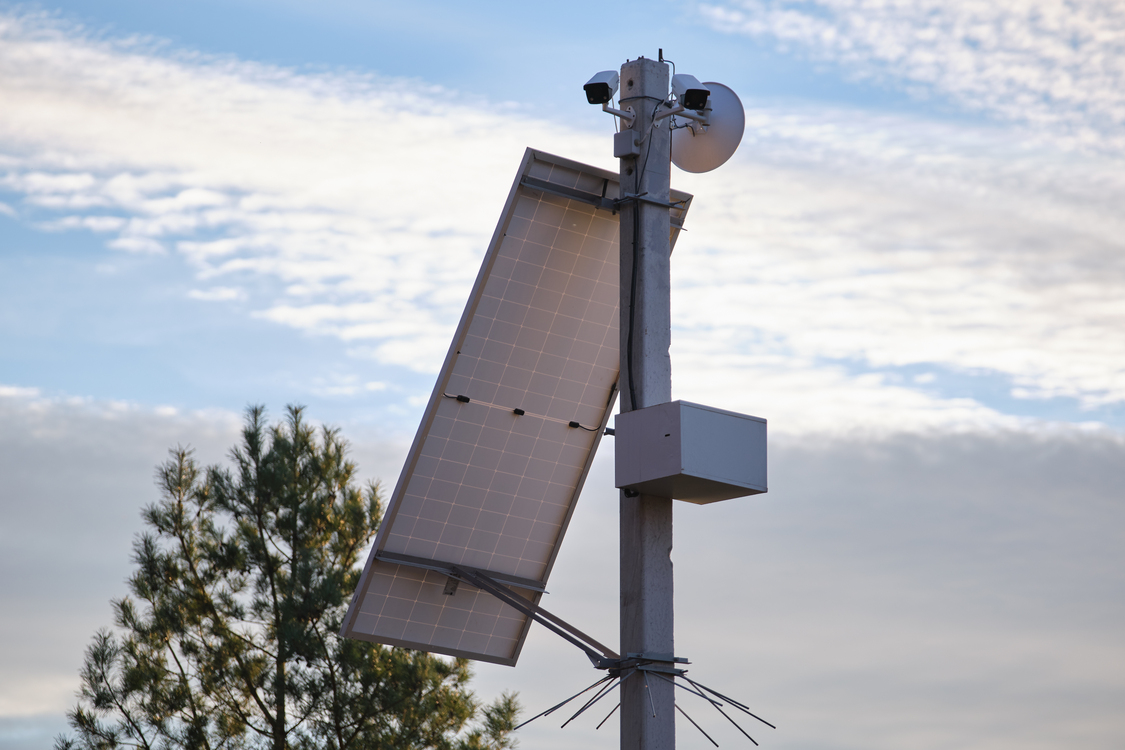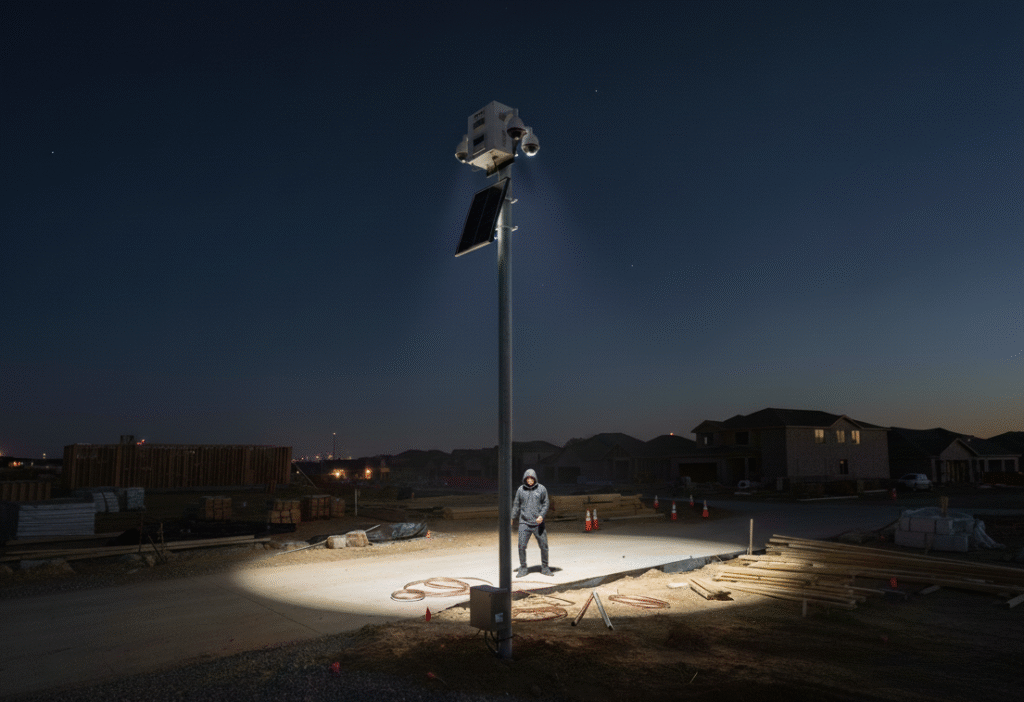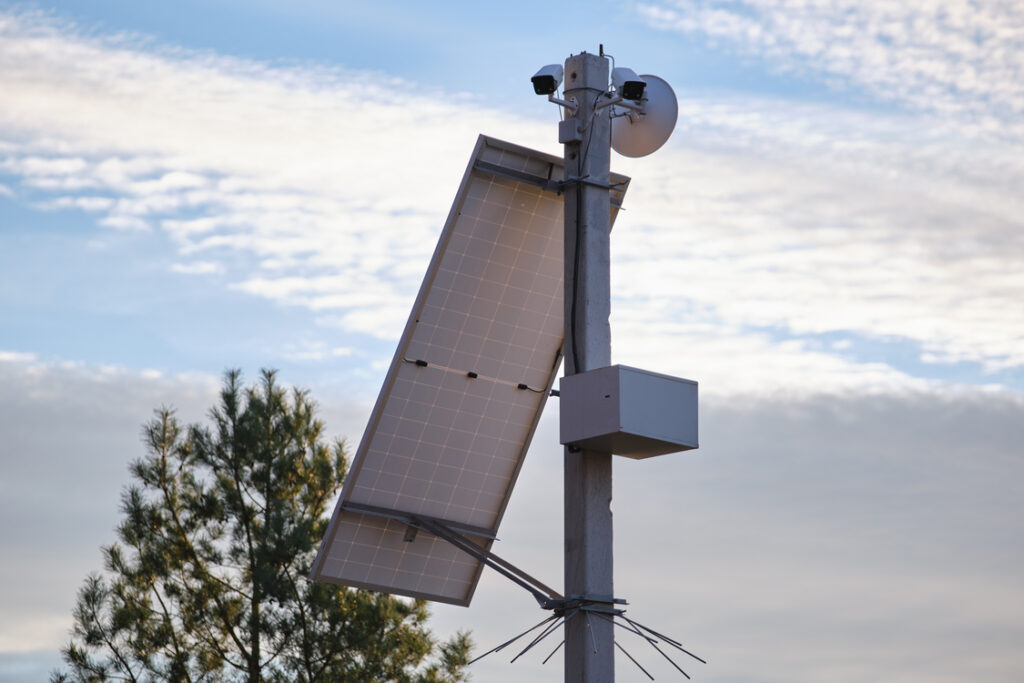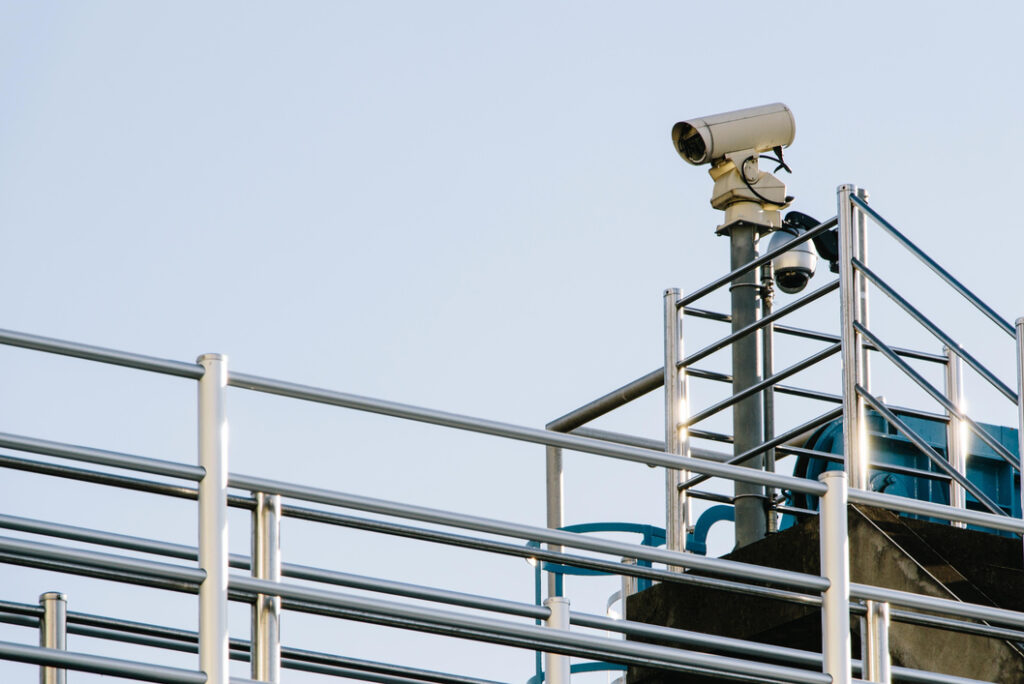Modern AI construction cameras send real-time jobsite alerts for people and vehicles—not wind, tarps, or bugs.
Pair them with visible lighting, live monitoring and talk-down, and a clear response script to interrupt intrusions early.
Use verified monitoring practices so the right events get the right response, fast.
For more related insights, see our construction site security camera guide and jobsite monitoring best practices.
1) Why Real-Time Alerts Matter on Jobsites
Losses happen in the hours between an incident and discovery. A missing spool of copper, a forced tool crib, or a truck inside the fence at 2 a.m.—by morning, it’s too late.
Real-time monitoring closes that gap. When analytics trigger as the behavior begins, you can flip on lights, challenge by voice, and dispatch if needed.
You’re solving a problem at minute one, not hour eight.
2) How AI Construction Cameras Detect the Right Things
Today’s AI construction cameras use onboard analytics to identify humans and vehicles while ignoring typical outdoor noise. Core detection tools include:
- Object classification: separates people and vehicles from moving debris or shadows.
- Line-crossing and area rules: alert only when a human or vehicle breaches a defined approach.
- Dwell-time: flags loitering near high-value assets like copper reels, generators, and tool cribs.
- Schedules and arming profiles: after-hours rules tighten automatically; daytime rules focus on restricted zones.
- Exclusion masks: cut out flapping fence fabric, tree limbs, and reflective puddles to reduce nuisance triggers.
The result: fewer false alerts, faster decisions, and less “alert fatigue.”
3) Verification and Response: What Turns an Alert into Action
A strong deterrence and response flow looks like this:
- Detection: camera analytics identify a human or vehicle in a protected zone.
- Verification: the alert includes a short clip or live peek to confirm activity.
- Interruption: lights or strobes activate; a calm, authoritative talk-down announces that the site is monitored.
- Escalation: if the subject persists, escalate to siren and call-out.
- Dispatch and documentation: final clips and notes are stored with timestamps for incident reports and insurance.
This keeps everyone aligned and gives operators a clear, repeatable playbook.
4) High-Value Use Cases You Can Enable on Day One
- After-hours perimeter breaches: line-crossing on pedestrian and vehicle approaches; immediate light + voice challenge.
- Materials protection: dwell-time around copper, HVAC units, diesel tanks, and laydown areas; alert on slow loading or tampering.
- Gates and deliveries off-schedule: vehicle detection at gates outside allowed windows; verify and respond before entry.
- Safety exceptions after hours: alerts when people enter cordoned zones or climb scaffolding when the site is closed.
- Remote and temporary jobsites: solar + battery + LTE or satellite backhaul for the same real-time response without grid power using a mobile tower.
5) A Scalable Layout That Works in the Field
Think in layers when designing your AI construction camera system:
- Sensors: fixed cameras on approaches and assets; one PTZ for wide-area sweeps and operator control.
- Deterrence: visible mounting height, clear signage, overhead or triggered lighting, and strobes at approaches.
- Audio: weather-rated horn speakers for live talk-down near gates and tool cribs.
- Comms: LTE or satellite for off-grid sites; wired WAN where available; automatic failover when possible.
- Mounting options: deploy via pole-mount vault or mobile tower for flexibility.
- Storage + cloud: onboard SD plus cloud clips for alerts; centralized evidence library with timestamps and notes.
6) Tuning Tips to Keep Alerts Actionable (and Rare)
- Start with narrow rules: begin on true approaches and high-value zones; expand only as needed.
- Use dwell-time on assets: five to ten seconds filters drive-bys while catching behavior that indicates intent.
- Mask the noise: exclude fence lines, tree crowns, and reflective areas to reduce motion artifacts.
- Schedule smart: tighten rules after hours; loosen during active work with focus on restricted zones only.
- Lead with voice: a calm talk-down resolves many intrusions without dispatch or escalation.
7) Measuring ROI in Weeks, Not Quarters
Track both leading and lagging indicators to prove the impact of your AI construction cameras:
- Leading: after-hours approaches detected, voice-downs delivered, false-alert rate, verified dispatches.
- Lagging: incident count and value, schedule delays avoided, overtime or re-work prevented, insurer feedback at renewal.
Many sites see incident reductions as soon as operators can interrupt behavior in the moment.
8) Deployment Checklist
- Map gates, laydown, tool cribs, fuel, offices, and blind corners.
- Choose tower(s) or pole-mount vaults to cover approaches plus one PTZ for overview.
- Enable human/vehicle classification, line-crossing, and dwell-time rules; set after-hours schedules.
- Add overhead or triggered lighting, strobes on approaches, and at least one horn speaker per hot zone.
- Document a challenge → warn → dispatch script and who receives alerts at each step.
- Save incident clips with timestamps and operator notes for reports and claims.
- Review weekly; move a camera or retune a rule if one zone is still noisy.
Conclusion
Visible deterrence and real-time alerts are transforming construction security.
With AI construction cameras, you can detect intrusions as they happen, verify them in seconds, and respond with authority—reducing theft, downtime, and false alarms.
Ready to modernize your site security? Request a site plan to get started or visit our construction site camera layout guide for step-by-step deployment tips.




